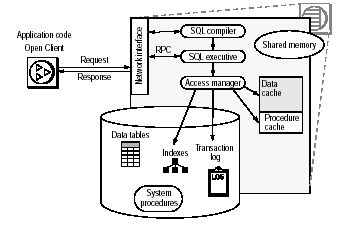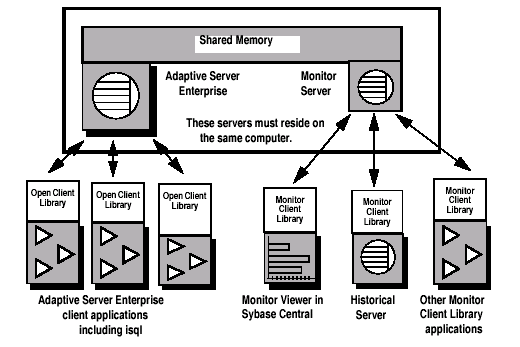Introduction
Adaptive Server Enterprise (ASE) is a performance-optimized relational database management system that is ideally suited for online transaction processing (OLTP) and decision support systems (DSS).
Figure 1 depicts the components of a typical ASE.

Figure 1 : Architecture of ASE
The components include Data Tables, Transaction log, System procedures, SQL compiler, SQL Executive, Access manager, Shared Memory, Data Caches, Network Interface etc. A monitor server also comes along with an ASE. The architecture of the monitor server is shown in Figure 2. As the communication between the adaptive server and monitor server happens through a shared memory, the monitor server has to reside on the same machine as the adaptive server. The monitor server communicates with the adaptive server and keeps track of all performance monitoring data. It also maintains all the counters.

Figure 2 : Architecture of the Monitor server
Starting in ASE 12.5.0.3, a new feature called ‘MDA tables’ is available to ASE users. These MDA tables provide access to low-level monitoring information in ASE; since the MDA tables can be accessed with regular SQL select statements, they are much easier to use than products like Monitor Server/Historical Server.
eG Enterprise supports two distinct approaches to monitoring the Sybase ASE - while one approach involves the usage of the Monitor Client Library (see Figure 2) for obtaining the metrics of interest, the other mandates the use of the MDA tables installed on the Sybase ASE.